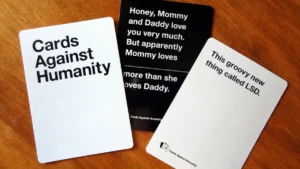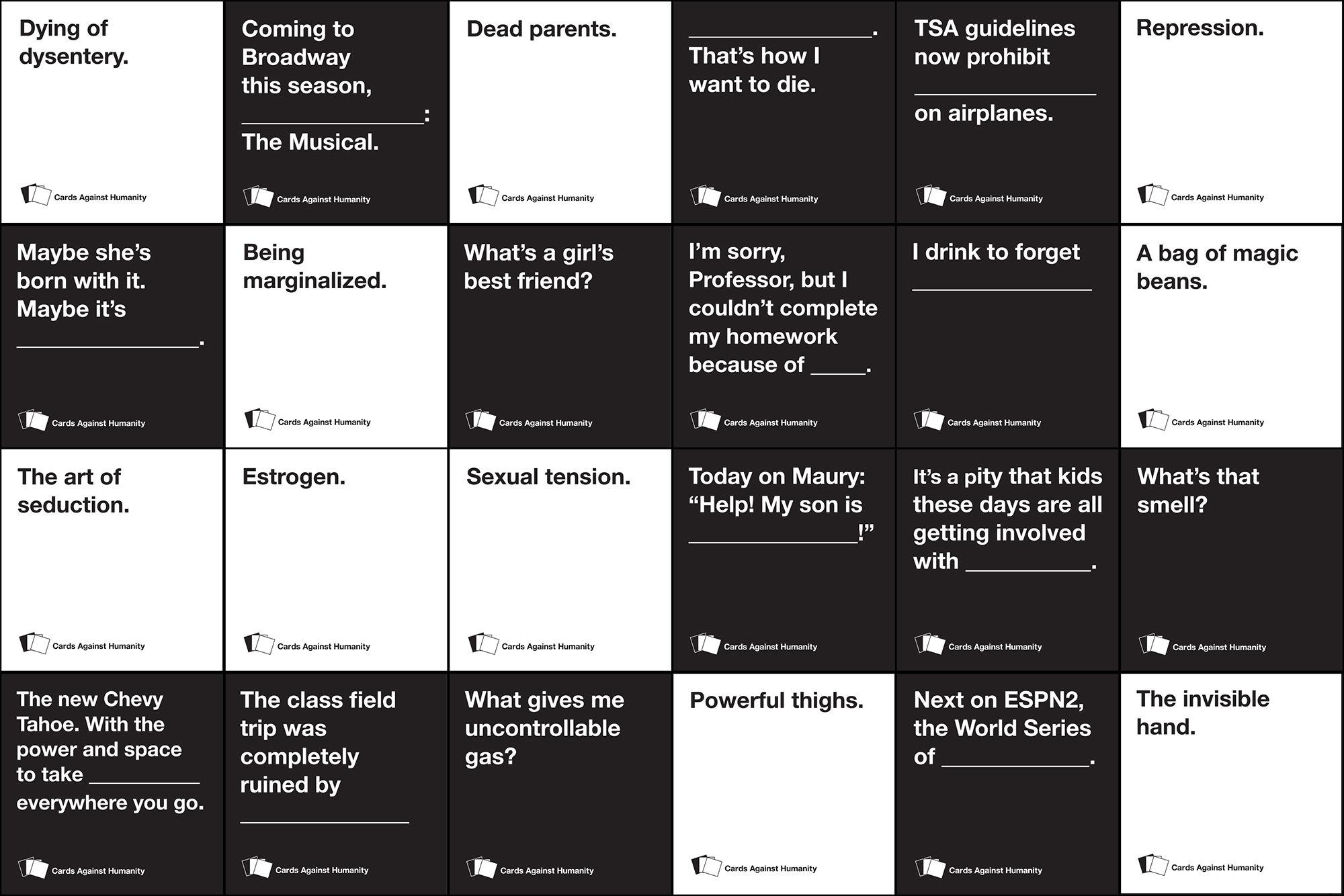
“Cards Against Humanity,” a “judging” game developed by Max Temkin and his high school friends from Highland Park High School, is designed specifically for adults who appreciate dark humor and social commentary. It is available as a physical card game as well as on various digital platforms, catering to a broad audience that values edgy, sometimes controversial entertainment. The central argument of my analysis, one that I’ve discovered through many hours playing this game, is that “Cards Against Humanity” effectively uses the mechanics of judgment and anonymity to foster unique group dynamics, enhancing social interaction through humor and intimate friendship. This game stands out in its genre by pushing the boundaries of acceptable humor, thereby prompting players to engage in deeper social interactions than they might in more conventional settings, creating stronger connections between players.
In playing “Cards Against Humanity,” I’ve observed that its gameplay mechanics significantly impact group dynamics. The anonymous submission of answers allows players to detach from their responses, reducing the anxiety associated with potential judgment while retaining the potential for fun and laughter. For instance, a session might involve a prompt that touches on sensitive topics like politics or culture, leading to a variety of humorous or shocking answers. The game’s design cleverly uses this setup to break social barriers and encourage a level of openness that is rare in other social contexts. In that way, “Cards Against Humanity” is a great way to introduce strangers to one another and create lasting connections.
However, the game’s reliance on provocative, potentially insulting content can also be seen as a limitation. While it excels in creating laughter and breaking ice, it risks alienating players who might find certain content offensive. This aspect of the game’s design calls for careful consideration of the audience and suggests the potential for improvement–perhaps a medium-offensive version is in order? Introducing customizable content packs could allow players to tailor the game’s intensity and themes, making it adaptable to different group preferences and more playable with a variety of audiences.
Comparatively, “Cards Against Humanity” differentiates itself from other judgment-based games like “Apples to Apples” by targeting an adult audience with a tolerance, or even a preference, for controversial humor. This focus on adult themes is a strategic design choice that caters to a specific type of communal engagement, defined by fewer boundaries and more controversial interactions.
When thinking about the MDA framework, “Cards Against Humanity” aligns its mechanics (card selection/judgment) with the dynamics of group interaction and the aesthetic of social bonding through potentially offensive humor. This alignment is critical in understanding how the game’s design influences player behavior and interaction patterns. The game encourages players to think strategically about the judge’s humor preferences, adding a layer of psychological insight into the gameplay and allowing players to learn more about one another over time. In this way, this game is an indirect form of a “getting to know you” game.
Overall, “Cards Against Humanity” offers a profound insight into how games can shape and reflect social interactions using boundary-stretching humor. By leveraging controversial jokes and the mechanics of anonymity and judgment, this game not only entertains but also challenges players to trespass into the complex terrain of social acceptability and personal boundaries. The game’s ability to provoke laughter and discussion makes it a powerful tool for exploring group dynamics, making it a standout example in the genre of social, judgment-based games. As a fan and player of this game, I can confidently say that it stands out as an example of a game that blends fun with building relationships. Many of my best experiences playing games have come from “Cards Against Humanity” because the game serves as a conduit for individuals to learn more about one another and laugh at the same time. When I played this game with friends, I learned more about their preferences and background, such as why friends might prefer a given food or who might find certain types of humor funny. “Cards Against Humanity” is therefore, in my opinion, one of the leading games in its category.




